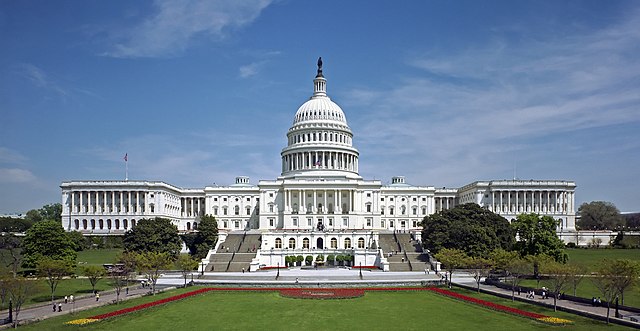Separation of powers under the United States Constitution
Separation of powers is a political doctrine originating in the writings of Charles de Secondat, Baron de Montesquieu in The Spirit of the Laws, in which he argued for a constitutional government with three separate branches, each of which would have defined abilities to check the powers of the others. This philosophy heavily influenced the drafting of the United States Constitution, according to which the Legislative, Executive, and Judicial branches of the United States government are kept distinct in order to prevent abuse of power. The American form of separation of powers is associated with a system of checks and balances.
The United States Capitol dome as seen from the Supreme Court Building
Grover Cleveland worked to restore power to the Presidency after Andrew Johnson's impeachment.
The United States Congress is the legislature of the federal government of the United States. It is bicameral, composed of a lower body, the House of Representatives, and an upper body, the Senate. It meets in the U.S. Capitol in Washington, D.C. Senators and representatives are chosen through direct election, though vacancies in the Senate may be filled by a governor's appointment. Congress has 535 voting members: 100 senators and 435 representatives. The U.S. vice president has a vote in the Senate only when senators are evenly divided. The House of Representatives has six non-voting members.
United States Congress
In 1868, this committee of representatives prosecuted President Andrew Johnson in his impeachment trial, but the Senate did not convict him.
The 1940 painting Scene at the Signing of the Constitution of the United States, depicting George Washington presiding over the signing of the United States Constitution
United States Congress c. 1915






